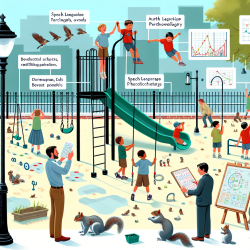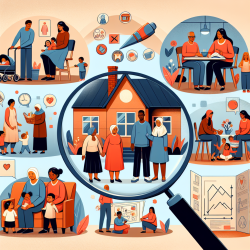Understanding the Impact of Social Exclusion on Children's Mentalizing Abilities
As practitioners dedicated to improving children's outcomes, understanding the dynamics of social exclusion and its effects on young minds is crucial. The research titled "Putting Ostracism into Perspective: Young Children Tell More Mentalistic Stories after Exclusion, But Not When Anxious" provides valuable insights into how social exclusion influences children's cognitive and emotional development.
The Study's Core Findings
The research, conducted by White et al., investigates how typically developing preschoolers and young children with anxiety disorders respond to social exclusion. The study utilized the "Cyberball" game, a virtual ball-toss game, to simulate social exclusion. Children were either included or excluded from the game and then asked to complete story-stem tasks that revealed their mentalizing abilities.
The findings indicate that typically developing children tend to enhance their mentalizing abilities following exclusion, using more mental state language and portraying story characters as intentional agents. This suggests an increased attention to others' mental states, potentially facilitating reconnection with peers. Conversely, children with anxiety disorders showed a decline in mentalizing abilities post-exclusion, highlighting the impact of anxiety on social cognition.
Practical Implications for Practitioners
These findings offer several practical applications for practitioners:
- Enhancing Social Skills: Practitioners can use these insights to design interventions that help children improve their social skills by focusing on understanding and interpreting others' mental states, especially after experiencing social exclusion.
- Targeted Support for Anxious Children: For children with anxiety disorders, tailored interventions that address stress-related deficits in mentalizing can be beneficial. Practitioners can work on strategies to help these children manage anxiety and improve their social interactions.
- Encouraging Prosocial Behavior: By understanding the link between social exclusion and mentalizing, practitioners can encourage prosocial behaviors in children, promoting a cooperative mindset that aids in social reintegration.
Encouraging Further Research
While the study provides a foundational understanding of how social exclusion affects mentalizing, further research is necessary to explore the nuances of these interactions across different contexts and populations. Practitioners are encouraged to delve deeper into this area, examining how various factors such as age, gender, and cultural background influence children's responses to social exclusion.
To read the original research paper, please follow this link: Putting Ostracism into Perspective: Young Children Tell More Mentalistic Stories after Exclusion, But Not When Anxious.










